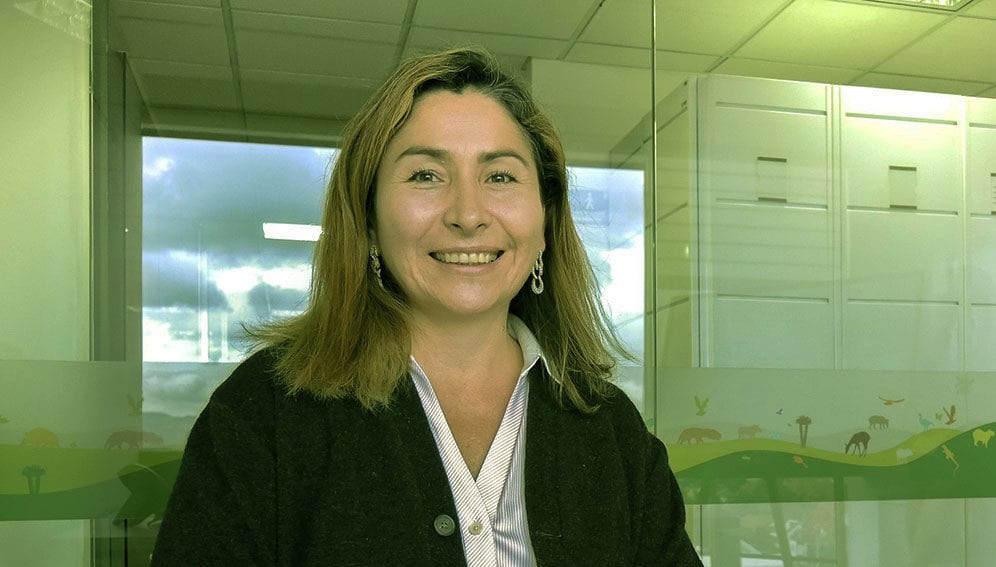By: Lisbeth Fog
Send to a friend
The details you provide on this page will not be used to send unsolicited email, and will not be sold to a 3rd party. See privacy policy.
Earlier this month the world woke up to some alarming news: one million species are now threatened with extinction, many within decades, more than ever before in human history.
The source was the Intergovernmental Science-Policy Platform on Biodiversity and Ecosystem Services (IPBES), which released “the most comprehensive assessment of its kind”, according to Sir Robert Watson, then chair of the organisation, at a plenary session in Paris. “We are eroding the very foundations of our economies, livelihoods, food security, health and quality of life worldwide,” he said.
The responsibility for chairing the IPBES for the next three years has now been handed to Colombia’s Ana María Hernández, elected May 4 in Paris.
Hernández has been head of international affairs, policy and cooperation at the Alexander von Humboldt Research Institute for Biological Resources since 2010 and was previously head of Colombia’s International Affairs Office.
Here she speaks to SciDev.Net about the report and its call to action.
This is not the first time the IPBES has called for urgent action. How are these conclusions different?
Previous assessments by IPBES have been very targeted. For example, for those interested in agriculture and nutrition the assessment of pollinators was very important. And in our regional assessments we gave very strong messages for each region.
But this is the first time we have the global assessment, to make everybody aware of what will happen to the whole world if biodiversity loss continues at this rate.
How do you compile such an extensive statistical report?
IPBES assessments are based on the best available evidence for sustainability. We used at least 15,000 articles and assessments from around the world, showing the state of biodiversity in different contexts, and our 145 experts analyzed and synthesized that information.
Within IPBES we have something called the ‘confidence classification’ so the reader can find the best available information and be aware of the level of confidence we are giving to that information.
“We have to change our attitudes, our economic, social and cultural behaviors from the individual to the global community.”
Ana María Hernández, IPBES chair
What kind of articles do your experts consult?
Some are scientific and government sources but others are provided by the wider population. When we start writing the assessment we produce a ‘first order draft’ which is open for comments on the web. Anyone can contribute.
When the experts meet, they review thousands of comments and if they are interesting, well-structured and backed by evidence, maybe we can include them.
Why in this assessment do you stress the importance of information from indigenous people?
IPBES is based on one basic premise: scientists are not the only ones to have information about biodiversity. That’s why we try to bring together different knowledge systems, such as indigenous and local knowledge, knowledge from practitioners, citizens, decision makers, as well as scientists from a wide variety of fields.
With those different points of view, IPBES can have a clearer picture of what is really going on with biodiversity.
The conclusions of this Global Assessment could seem overly negative…
Nobody wants to hear that not only are we facing devastation but we are the ones responsible for it. That’s the reality. So, we have to confront each other and learn to be self-critical. It is not negative; it gives evidence, but also says what we need to do next.
If we understand and take action, things can change. But the reality is, that action is not easy. We have to change our attitudes, our economic, social and cultural behaviors from the individual to the global community.
What’s next for you in your three-year period as chair of IPBES?
In Paris, we not only approved the global assessment, but also a rolling programme of work up to 2030. And that gave me a very clear road map. We have to finalise the three assessments that we are doing now — on sustainable use of biodiversity, invasive alien species, and the multiple values concept about how people value nature.
Then we have another four assessments, including one on the nexus of biodiversity and Sustainable Development Goals and another on business and biodiversity. That will be very interesting because it is an opportunity to involve the private sector in the discussion.
What does it mean to be the first woman chairing the IPBES?
To be honest, I don’t feel I was chosen for this role because I am a woman. I think I was elected in recognition of the work we have done in the scientific community in Colombia and Latin America.
The most important issue here is not the gender issue, but the knowledge issue. Previous IPBES chairs have come from the natural sciences while my background is policy science, so we bring to the community our different points of view. The gender question is a tricky one. I don’t feel different because I’m a woman. But my kids are very proud of me.














